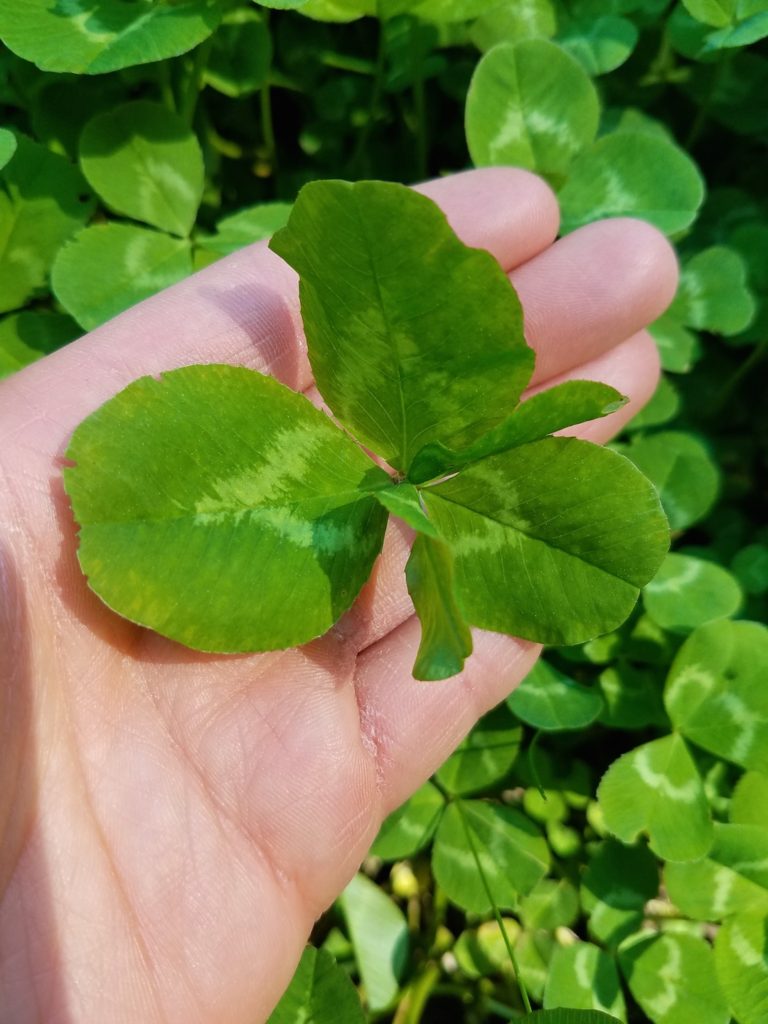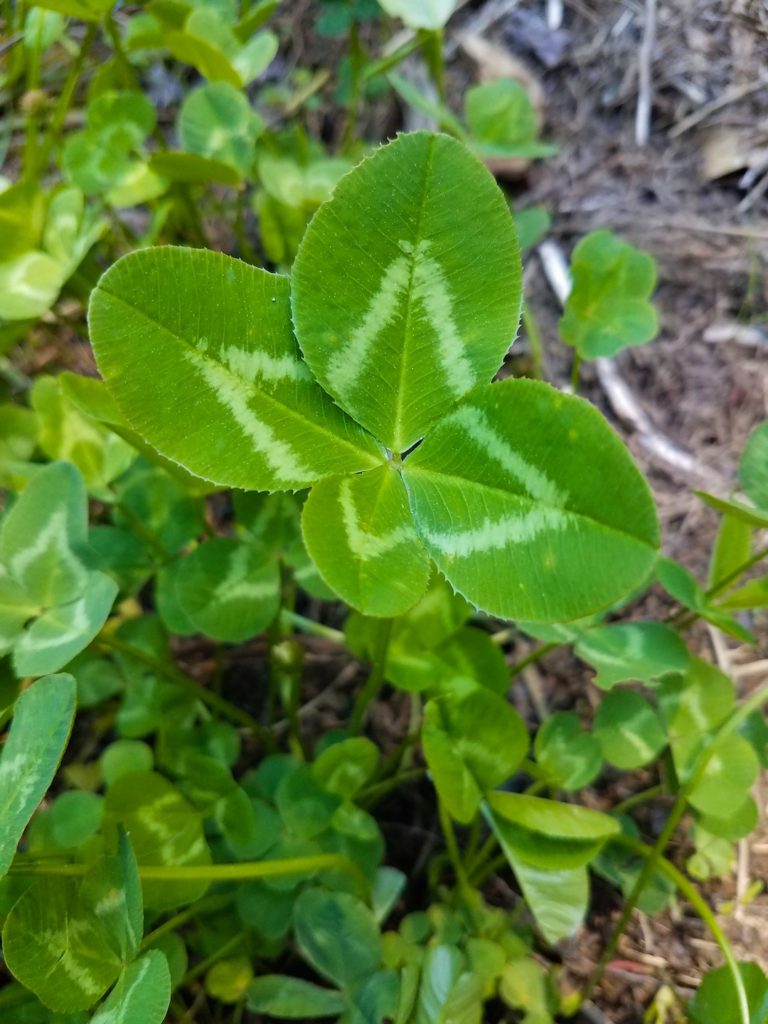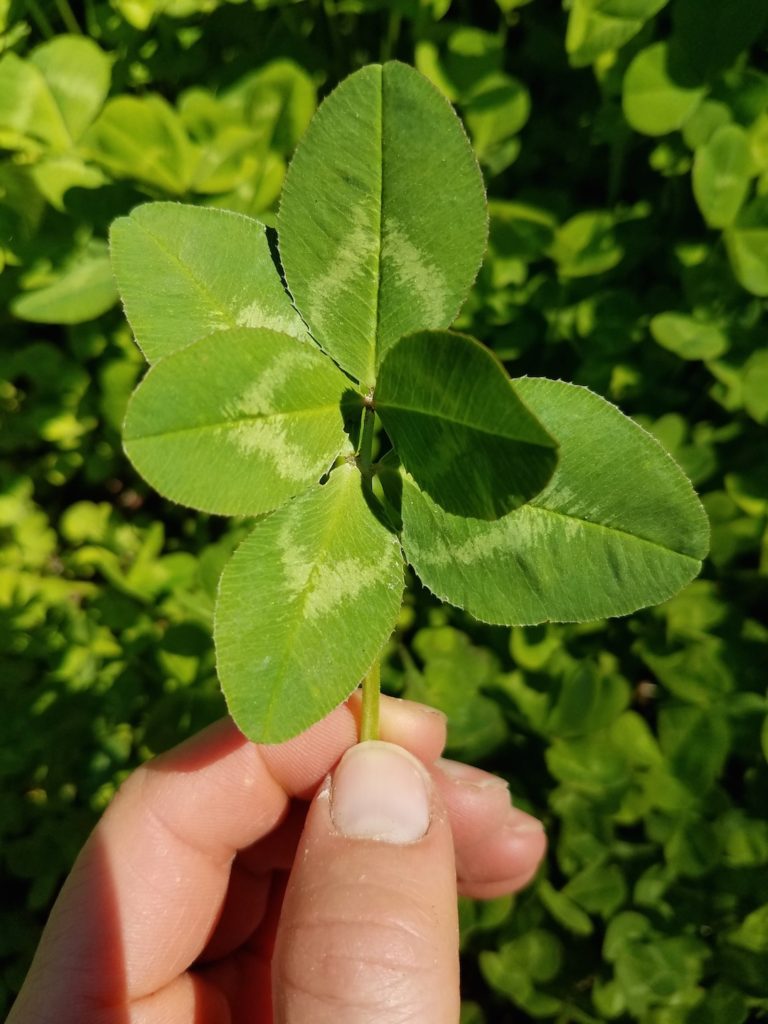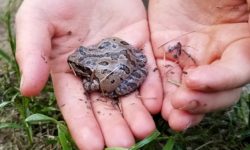If four-leaf clovers bring luck, then my garden must be extremely lucky. Our family has found at least a dozen four-leaf clovers in the garden this spring. We have the advantage that I planted clover around the fruit trees and it is thriving so we have a large patch.
Not only do we find four-leaf clovers but also five-leaf and six-leaf clovers. What causes the extra leaves?

Scientists have determined that the extra leaflets are caused by genetics, mutations and environmental conditions.
Many of the physical appearances of white clover (Trifolium repens) are influenced by genetics, like the appearance of the white v-mark, red flecking and red coloring on the white flowers.
A dominant gene in white clover produces three-leaf clovers. However, when the recessive gene is expressed or there is a mutation, four or more leaves are produced. Typically the fourth leaf is smaller.

Five and six-leaf clovers are even more rare. Odds of finding a four-leaf clover range from 1 in 5,000 to 1 in 10,000 but can be less if certain conditions are present.
Environmental conditions such as weather, growing conditions, certain chemicals, or levels of radiation affect clover.
One study determined that the extra leaf is more frequent at a certain temperature because clover prefers cooler weather. Another study determined that exposing flowers to gamma rays during the pollination stage resulted in more four-leaf clovers. So multiple factors impact the production of four-leaf clovers.
The fourth leaf is considered good luck so I’m hoping that luck spreads to the rest of the garden.

Originally published June 2020. Updated February 2024.




